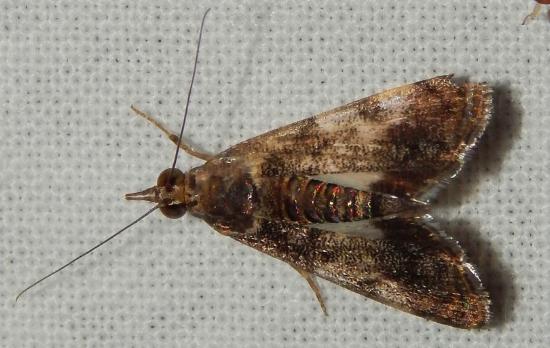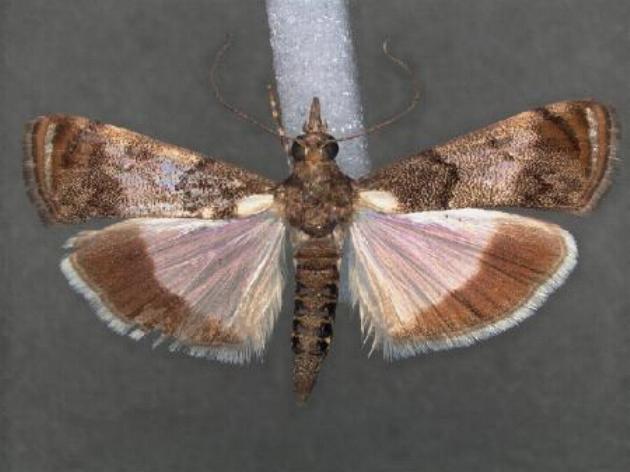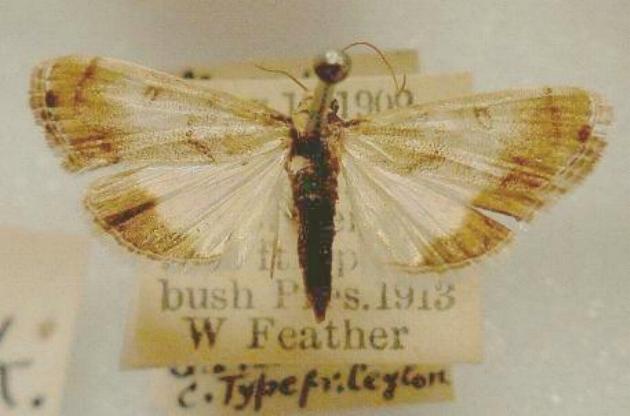
| Moringa Moth (one synonym is Scopula subjectalis Walker, [1866]) NOORDINAE, CRAMBIDAE, PYRALOIDEA | (donherbisonevans@yahoo.com) and Stella Crossley |

(Photo: courtesy of
Moira FitzPatrick,
Bulawayo, Zimbabwe)

| Moringa Moth (one synonym is Scopula subjectalis Walker, [1866]) NOORDINAE, CRAMBIDAE, PYRALOIDEA | (donherbisonevans@yahoo.com) and Stella Crossley |

(Photo: courtesy of
Moira FitzPatrick,
Bulawayo, Zimbabwe)
These caterpillars feed on plants in BRASSICACEAE, including especially
The caterpillars are pests in some parts of the worlde as they are inclined to defoliate these trees.

Adult moths have hyaline wings. The forewings have scattered dark markings and a broad dark margin. The hindwings are also transparent with broad dark margins. The body is also dark. The moths have a blueish or greenish metallic sheen. The metallic sheen fades to dark brown in dead specimens. The wingspan is about 2 cms.
The moth is found through Africa and Asia, including:
and the species also occurs in Australia in

Further reading :
Francis Walker,
Catalogue of Lepidoptera Heterocera. Pyralides,
List of the Specimens of Lepidopterous Insects in the Collection of the British Museum,
Part 17 (1859), p. 979.
 caterpillar |  butterflies |  Lepidoptera |  moths |  caterpillar |
(written 18 March 2015, updated 1 April 2017, 9 February 2021)